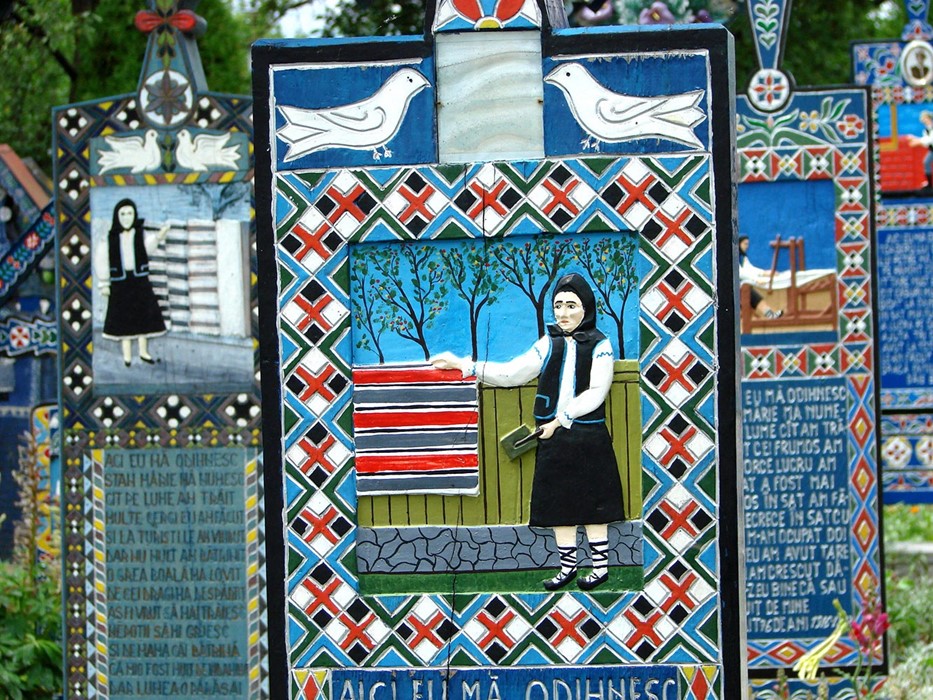AnOther spotlights seven of the most fascinating final resting places, from the ostentatious to the austere, from mountainside to under the sea
Inevitably certain rather glum adjectives spring to mind when one thinks of a cemetery; bleak, spooky, drab, for instance. And yet, it’s miserable enough spending a night in a dowdy hotel, let alone contemplating forever in a one-size-fits all graveyard. With that in mind, we’re celebrating seven cemeteries that are life-affirming rather than depressing and demand much more colourful descriptions; think romantic, glamorous, meditative, strange, and, yes, even funny.
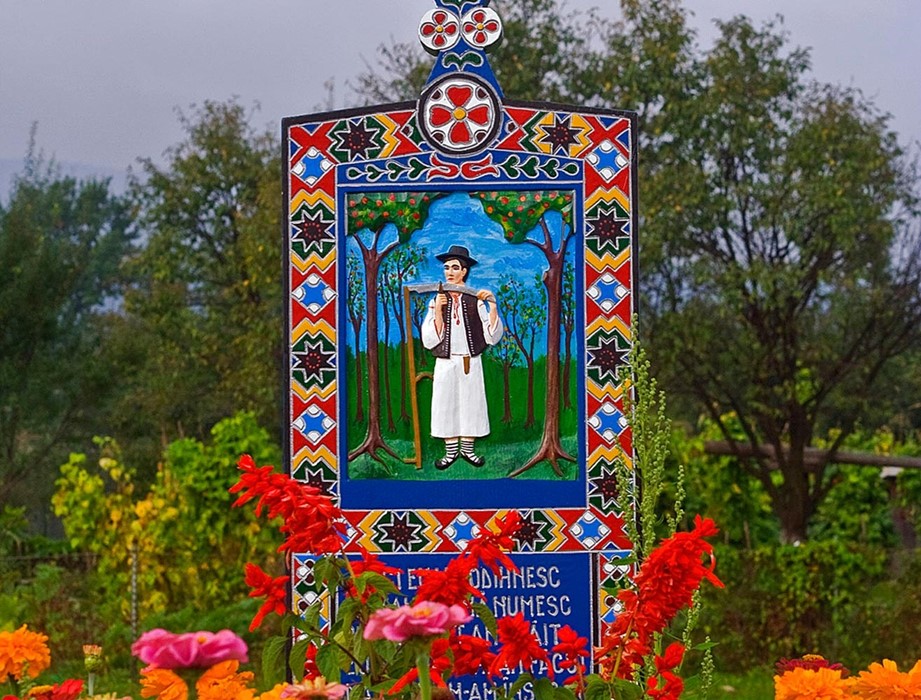
Merry Cemetery, Romania
With its cheerful multicoloured crosses, the appropriately named Merry Cemetery in Săpânța, Romania, flies in the face of the image of a cemetery as a sober, somber place. The bright tombstones are decorated with poems and naïve illustrations depicting scenes from the deceased’s lives and deaths (a tradition started by artist Stan Ioan Pătraş in 1935, and continued by his apprentice since 1977). The often tongue-in-cheek epigraphs are refreshingly truthful and definitely not reverential; the town drunk is depicted with a bottle to his lips, the inscription on a womanizer’s grave tells of how he loved to sit in a bar “next to someone else’s wife”, and battle-axe mother-in-law is implored to stay dead. For its deadpan, wry approach to death, Merry can’t help but make you smile.
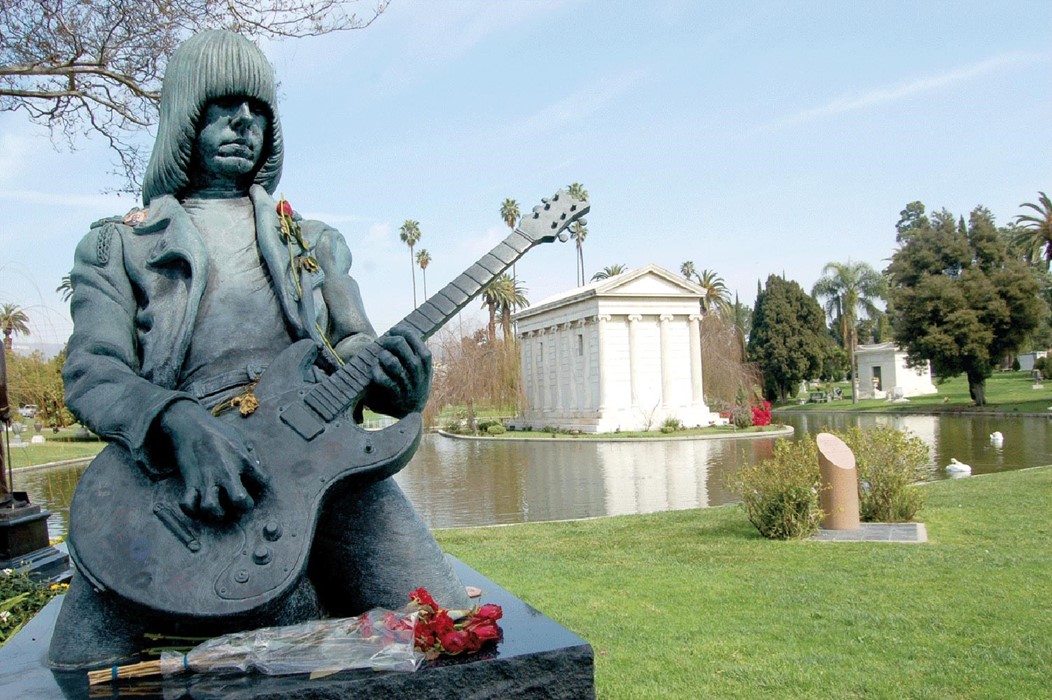
Hollywood Forever, Los Angeles
On Sunset Boulevard opposite Paramount Studios, the Hollywood Forever cemetery – with its manicured lawns, palm trees and unapologetic marriage of the showy and the spiritual – is as Hollywood as the Chateau Marmont, the religious equivalent of a kale juice and cigarette. Jayne Mansfield, Cecil B. DeMille and Rudolph Valentino are among the A-Z of silver screen stars whose perfect, pristine graves you’ll find here. In typical LA-style there are an impressive number of grandiose mausoleums, obelisks and tombs; founder of the LA Philharmonic, William A. Clark Jr., has his own faux Grecian tomb on an island in a lake populated with swans, that wouldn’t look out of place in Bel Air (and like the gated community, location is everything here, burial near Johnny Ramone is one of the most common requests). Special marks to voiceover artist Mel Blanc, however, whose simple but effective tombstone reads, “That’s All Folks”. Today the cemetery also hosts outdoor film screenings and concerts under that sweeping Californian sky; that might be crass anywhere else, but at Hollywood Forever, it’s a fitting tribute.

Highgate Cemetery, London
The most famous and arguably most impressive of London’s ‘Magnificent Seven’ cemeteries (built in the Victorian era, when the inner-city cemeteries were straining under demand), Highgate is a pilgrimage not just for its famous residents, but also for its beautiful gothic architecture. Opened in 1839, in the 1970s the cemetery went into decline, and nature and vandals took over. Charitably rescued and restored, today, the cemetery still possesses the romance of the wildness of nature baying nearby – think tree-lined winding paths and monuments strewn with ivy. Today, Highgate is divided into two; the East Side and the West Side. The East Side’s most famous resident is Karl Marx, with George Eliot, Christina Rosetti and Malcolm McLaren also interred there. The West Side is entry by private tour only; visit for evocative examples of glorious, gothic Victorian architecture that nods to the exotic, including the Egyptian Avenue flanked by obelisks, the Terrace Catacombs and Circle of Lebanon, which surrounds an ancient cedar tree.
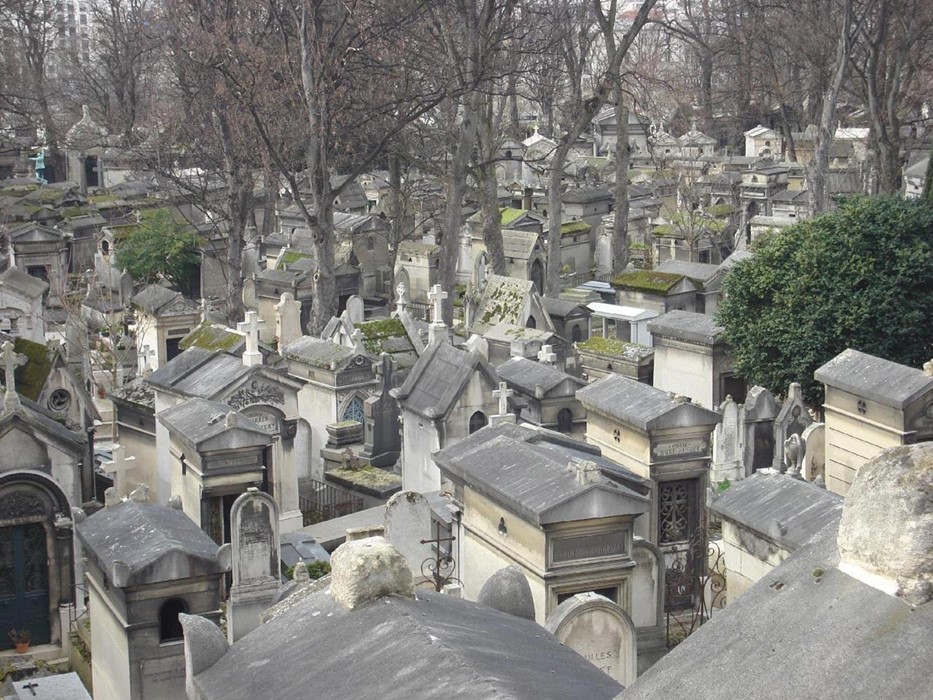
Cimetière de Père Lachaise, Paris
Sprawling over 44 hectares of the uneven, haphazard ground of a former Jesuit retreat house, the list of names laid to rest in Paris’s Cimetière de Père Lachaise reads like a bohemian’s fantasy dinner party guestlist: Oscar Wilde, Jim Morrison, Edith Piaf, Marcel Proust, Chopin, Modigliani, Molière and so on, the kind of names whose appeal and romance has not diminished with time (Oscar Wilde’s grave is covered in kisses, Piaf’s a blanket of flowers and Morrison’s has become a makeshift tribute of graffiti and bottles). Unimpressed by fame? The Cimetière de Père Lachaise is still worth taking a trip to for the gothic graves, Haussmannian burial chambers and views across Paris.
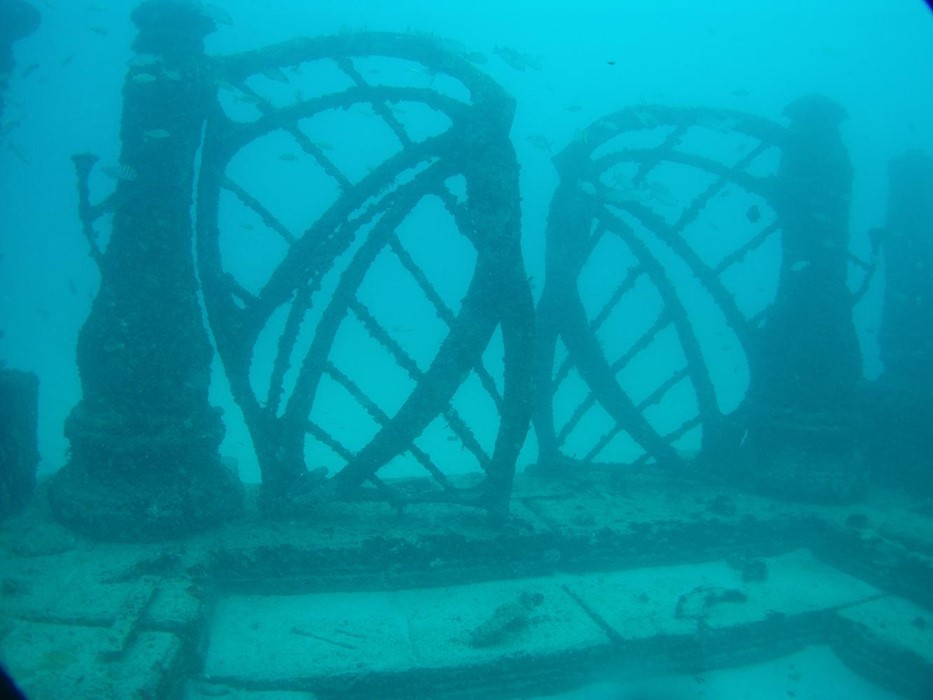
Neptune Memorial Reef, Miami
3.25 miles off the coast of Miami’s Key Biscayne, 40 feet under the sea, is the delightfully strange Neptune Memorial Reef. The world’s largest man-made reef (it will cover over 16 acres of ocean-floor when complete), it’s also its only underwater cemetery. Conceived to be an artistic representation of the Lost City of Atlantis, regal lions and grandiose pillars cut ghostly figures in the otherworldly blue glow.
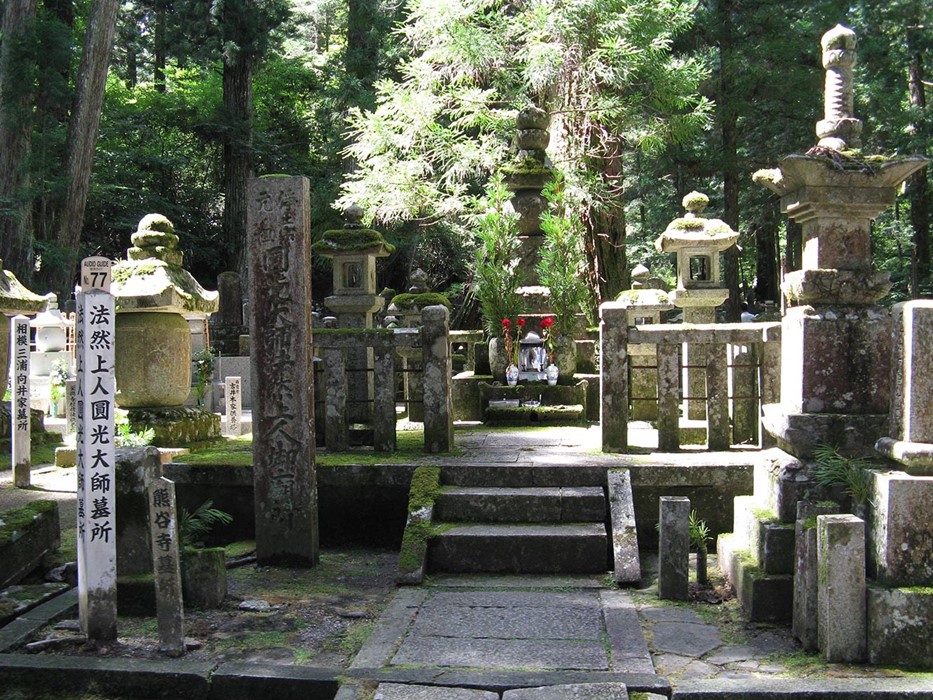
Okunoin, Mount Koya, Japan
In an ancient forest of monumental cedar wood trees on the holy Mount Koya, Okunoin – with its 200,000 graves and 100 temples – is Japan’s largest cemetery, and one of its most sacred sites (the meditative, monastic atmosphere is heightened when the mist rolls in or the snow blankets the forest in winter). Among the Buddhas, pagodas and tombstones are some more unexpected memorials, such as one for the puffer fish that lost their lives to chefs, which are touching in their minutiae and specificity. A Buddhist pilgrimage site, the Okunoin is home to the mausoleum of Kobo Daishi, the founder of Shingon Buddhism (whose followers believe rests in an eternal meditation). The mausoleum is illuminated by the ethereal glow of 10,000 lanterns, a sight even the most jaded traveller can’t fail to be moved by.

San Cataldo Cemetery, Modena
Despite architect Aldo Rossi’s declaration that “I cannot be postmodern, as I have never been modern”, his unfinished San Cataldo Cemetery on the outskirts of the Italian city of Modena is considered one of the first, and most important, of the movement’s buildings. Designed in 1971 while Rossi was recovering from a car accident (no doubt an event that made him more aware of the notion of his own mortality), the cemetery is defined by a striking, terracotta ossuary. With an open roof, windows and doors, the stark, austere construction has a feeling of fluidity, further enhanced by the absence of the ephemera of religious worship. Unfinished, the building has a feeling of being suspended in time, giving it a strangely immortal ambience. Some criticize the space for its unforgiving – they would argue depressing – aesthetic, but it's that plainness which imbues San Cataldo Cemetery with a quietly spiritual quality; you aren’t distracted, you just are.
